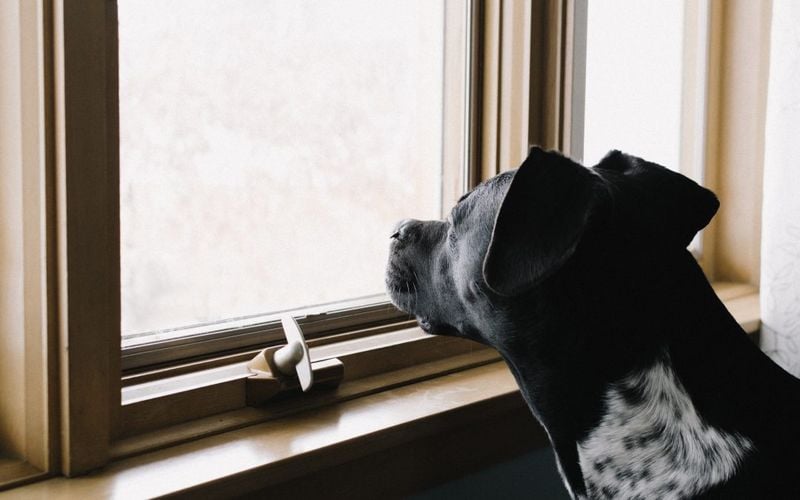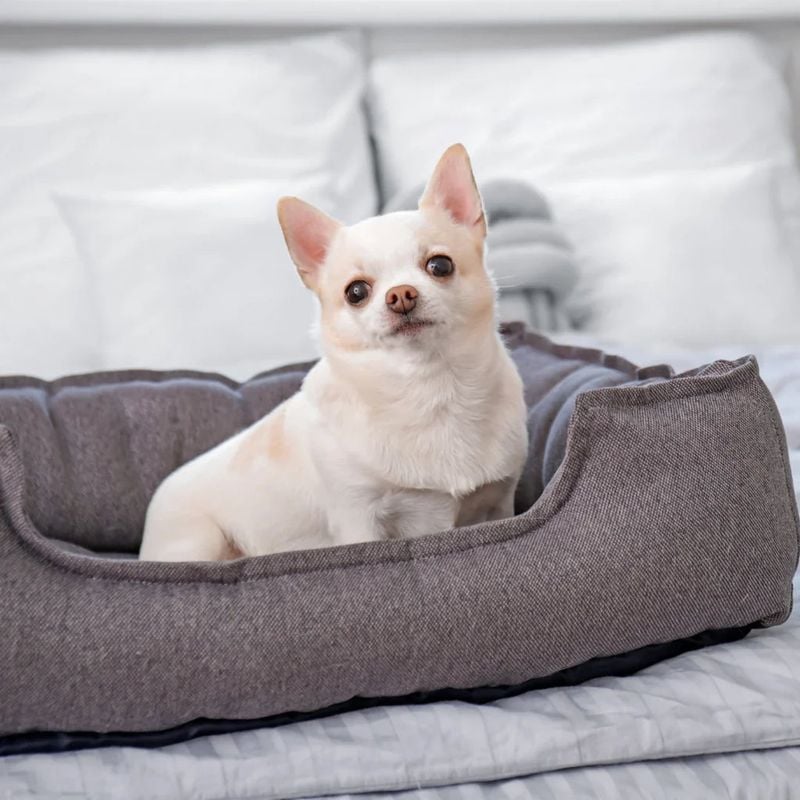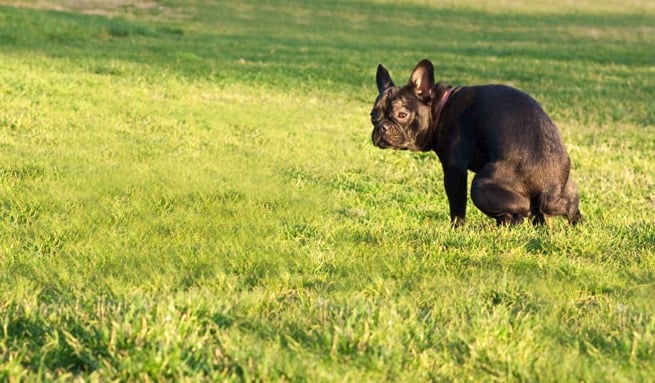Is Your Dog Anxious? Here’s How to Calm Them Down Naturally
When your dog feels safe, their whole world changes. Their tail wags a little easier, their body relaxes, and that sweet trust in their eyes shines a little brighter.
But just like us, dogs can get stressed, anxious, or overwhelmed—sometimes without us even realizing it. Whether it’s fireworks, new environments, or just a change in routine, our pups rely on us to create a calm, comforting space they can retreat to.
This guide will walk you through 12 simple, effective ways to help your dog relax and feel secure. From creating safe zones to tapping into the power of scent and sound, these tips are designed to soothe both body and mind.
Because when your dog knows they’re safe with you, it builds a bond that nothing—not even thunder—can shake.
Create a Consistent Routine
Dogs are creatures of habit, and a steady routine brings them comfort. Knowing when they’ll eat, walk, play, and rest helps your dog predict what’s coming next—and that predictability eases their nerves.
If their days are full of random surprises, your pup may start to feel uncertain and uneasy.
Try sticking to regular mealtimes, walking schedules, and bedtime rituals. Even little things, like greeting them the same way each morning, reinforce a sense of normalcy.
A consistent schedule doesn’t mean your life has to be rigid—but your dog will appreciate knowing that no matter what else changes, some things will always stay the same.
Design a Cozy Safe Space
Every dog deserves a spot they can escape to when the world feels too loud or overwhelming. Whether it’s a crate with soft blankets or a quiet corner of the living room, this space should feel warm, safe, and off-limits to chaos.
Make sure it’s away from high-traffic areas, and resist the urge to pull them out when they retreat there. Let it be their little sanctuary.
Familiar scents, a few favorite toys, and low lighting can make it even more soothing. When dogs know they have a place to relax without judgment or interruption, their overall stress levels drop dramatically.
Use Calming Scents or Diffusers
A dog’s nose is a superpower—and it can be used to help them relax. Scents like lavender, chamomile, and valerian root have been shown to reduce anxiety in dogs, just like in people.
You can use dog-safe essential oil diffusers, sprays, or calming collars that release soothing aromas. Just be sure they’re pet-approved and diluted properly, as some oils can be too strong or even toxic.
Try spraying a light mist near their bedding or using a plug-in diffuser during stressful moments like storms or when you’re away. It’s a simple, natural way to create a more peaceful environment.
Try Calming Music or White Noise
Music can work wonders on a nervous pup. Gentle classical music, ambient soundtracks, or audio specifically made for dogs can mask unsettling noises and promote a relaxed atmosphere.
If your dog tends to panic at thunder, fireworks, or household commotion, playing music or white noise can be a game changer. YouTube and streaming services even offer pet-calming playlists.
White noise machines also help drown out outside distractions like barking dogs, traffic, or construction. The constant, soothing sound becomes a familiar buffer—and familiarity is something anxious dogs crave.
Offer Interactive Toys or Chews
Mental stimulation isn’t just for fun—it’s an important part of emotional regulation. Puzzle toys, treat-dispensing balls, and long-lasting chews give your dog something to focus on besides whatever’s stressing them out.
Interactive toys tap into natural instincts like sniffing, chewing, and problem-solving, which are all great for calming nerves.
When your dog’s mind is engaged, it’s harder for anxiety to take over. Bonus: these toys also promote independence and reduce boredom, which is often at the root of behavioral issues like barking or pacing.
Incorporate Gentle Massage and Petting
Touch is powerful. Just like a hug can ease our stress, a slow, gentle massage can help your dog release tension and feel emotionally connected.
Start with long, calm strokes from the head down the back, and pay attention to how your dog responds. Some enjoy ear rubs or chest scratches more than belly rubs—every dog has preferences.
The key is to keep your energy soft and reassuring. This isn’t playtime—it’s your way of saying “you’re safe with me.” A daily massage session can become a treasured ritual for both of you.
Use Pressure Wraps or Anxiety Vests
Some dogs benefit greatly from deep pressure—kind of like a weighted blanket for humans. Products like the ThunderShirt gently wrap around your dog’s torso, applying light pressure that helps calm the nervous system.
This works especially well during fireworks, car rides, or vet visits. Many owners notice an immediate shift in their dog’s body language after putting one on.
Be sure to introduce the vest gradually in a low-stress setting so it becomes associated with comfort, not just panic events. For dogs with general anxiety, a pressure wrap might be one of the easiest tools to add to your calming toolkit.
Limit Exposure to Stress Triggers
While socialization is important, forcing your dog into overwhelming situations can do more harm than good. If your pup panics around crowds, other dogs, or loud noises, try to reduce exposure while working slowly on desensitization.
Watch their body language—tucked tail, lip licking, or frozen posture are all red flags. Respecting those signals helps build trust and prevents fear from escalating.
If you know a certain trigger is unavoidable, prepare in advance with calming tools, familiar objects, and a quick escape plan. Less exposure means less reactivity and more time for your dog to feel secure.
Practice Positive Reinforcement Training
Confidence comes from small wins. When your dog is praised and rewarded for good behavior, they start to see the world—and themselves—in a more positive light.
Instead of punishing fear-based reactions, reward calm behaviors with treats, praise, or play. This teaches them that staying relaxed brings good things.
You can even train specific calming behaviors like “settle” or “go to your mat.” Over time, these become comforting routines they associate with peace and safety.
Training this way also strengthens your bond and makes your dog more eager to trust your lead.
Try Natural Calming Supplements
Sometimes your dog needs a little extra support. Natural calming supplements can provide just that, with ingredients like L-theanine, melatonin, chamomile, or CBD (if approved by your vet).
They come in chews, powders, drops, or tablets, and can be especially helpful during travel, transitions, or loud holidays.
Always consult your veterinarian before introducing a new supplement, and start with the smallest dose. These aren’t sedatives—they’re gentle nudges toward relaxation.
For some dogs, the shift is subtle but meaningful, helping them navigate stressful situations with less panic and more peace.
Provide Physical Exercise Daily
A tired dog is a calm dog. Daily exercise helps burn off excess energy that might otherwise turn into anxiety, restlessness, or destructive behavior.
Walks are great, but they aren’t the only option. Fetch, tug-of-war, agility games, and even structured playdates can get the job done. Just tailor the activity to your dog’s breed and energy level.
Consistent movement doesn’t just help the body—it also promotes mental wellness. Endorphins kick in, tension melts away, and your pup gets the chance to release whatever worries they’ve been holding onto.
Be Calm and Reassuring Yourself
Your dog takes cues from you. If you’re tense, agitated, or impatient, your dog will feel it—even if you’re trying to hide it. On the flip side, when you stay grounded, they feel more secure too.
Use a soothing tone of voice, avoid sudden movements, and approach stressful moments with calm leadership. Even a deep breath before giving a command can shift the mood.
This doesn’t mean suppressing emotions, but it does mean being mindful of the energy you bring into shared space. You’re your dog’s anchor—and they’ll follow your lead more than you think.

















